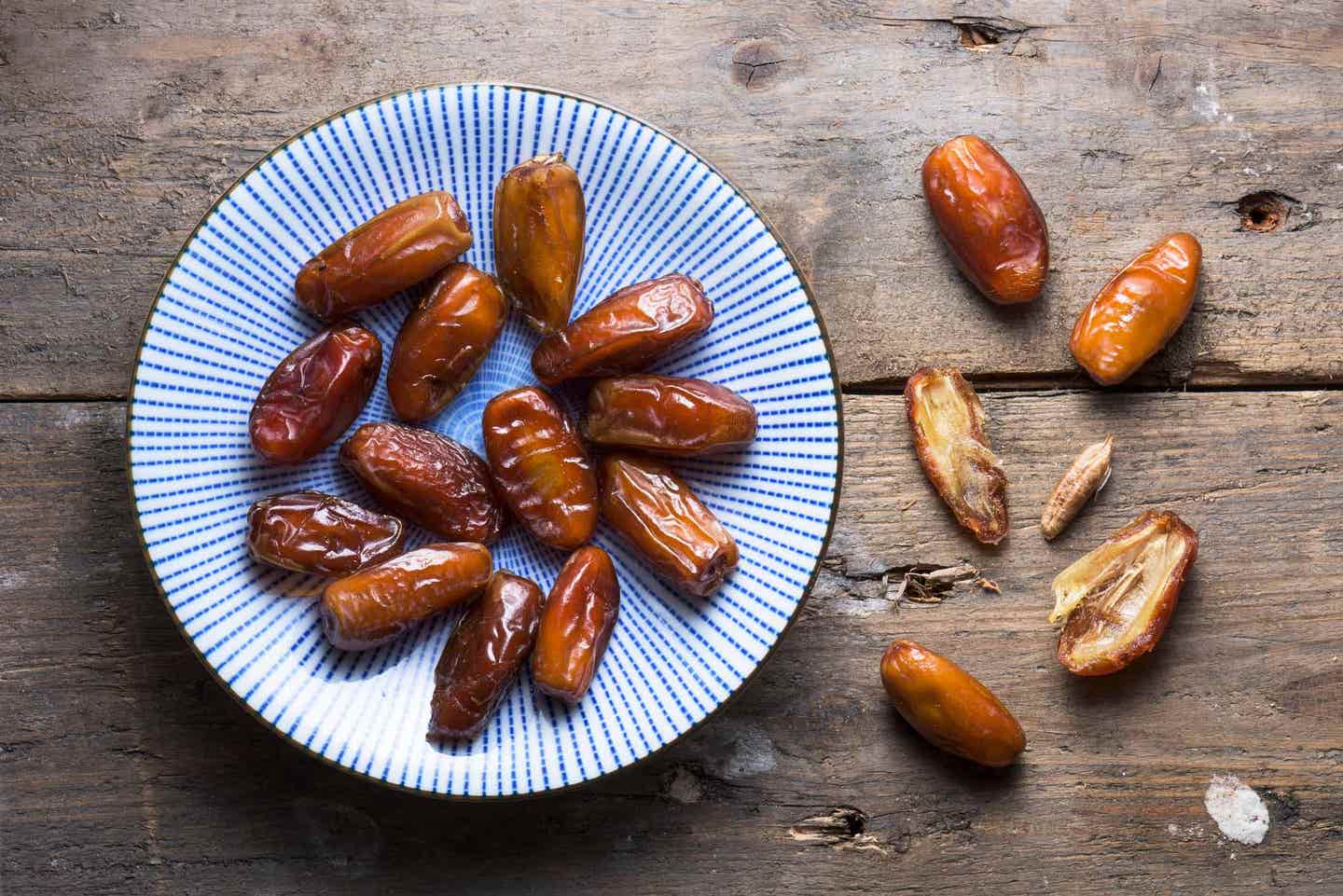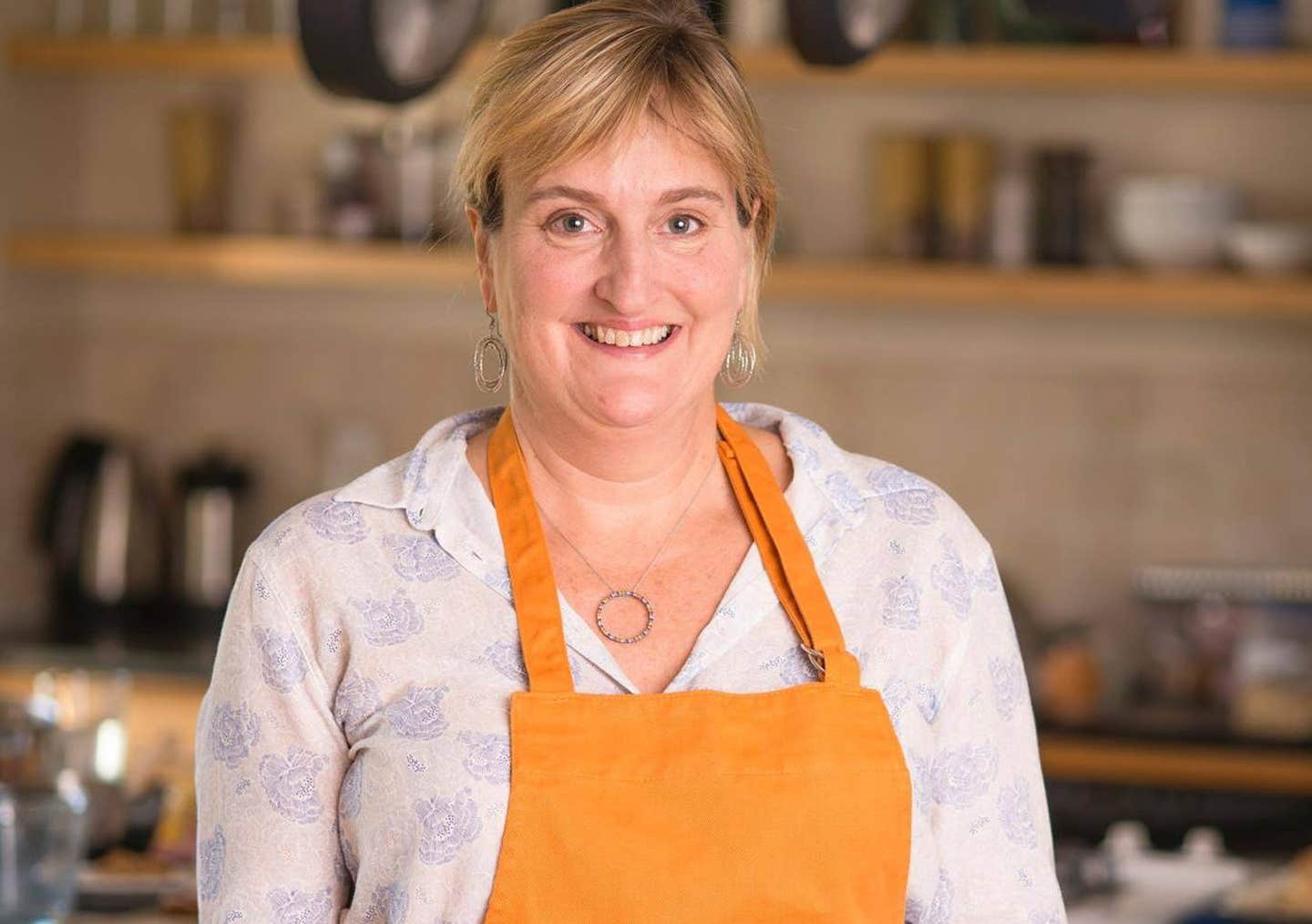
Sweet, Chewy, and Nutrient-Packed: A Deep Dive into Dates
Lusciously chewy and caramel-sweet, dates definitely live up to their reputation as “nature’s candy.” But beyond just being a delicious snack, dates have a wide variety of culinary uses, elevating the flavors and bringing natural richness to sweet and savory dishes alike. They’re also a rich source of fiber and other nutrients. In this guide, we’ll explore what makes the fabulous sun-dried fruits so special and how to use them in your cooking and baking.
What Are Dates?
Dates are small, oblong fruits that grow in clusters beneath the crown of date palm trees. They are native to the Middle East, but are now cultivated in hot, dry, desert regions around the world, including the Coachella Valley of California. Unlike other fruits that have a single point of peak ripeness, dates can be harvested at three different stages: when they are ripe and soft, mature and semi-soft, or dry and almost hard. (These fully dried dates are called bread dates.)
Are Dates Dried Fruits?
Wondering if dates are fresh or dried fruits? The answer is somewhere in between.
As dates ripen, they go from green to yellow to reddish brown and begin to shrivel and shrink. The heat of their growing environment naturally dries out dates’ flesh, concentrates their sugars, and eliminates bitter fruit tannins. They’re ready to pick when they have become firm and fragrant, with translucent skins and intense sweetness. Dates are generally harvested between September and December, though the exact timing depends on the variety and the growing location.
Date Nutrition
Talk about your feel-good treat! One serving of dates (1 oz., or three medium pitted dates) contains 1.6 grams of fiber, 1 gram of protein, and about as much potassium as half a banana. Dates are also a good source of magnesium, calcium, and antioxidants.
Medjool, Deglet Noor, and More Varieties
Dates are second only to raisins in terms of global dried-fruit production, and each growing region has its specialty varieties. Here’s a rundown of the few most common types, their flavor profiles, and best uses (besides snacking—all varieties of dates are good for that).
Medjool
Medjool, aka the “king of dates,” is also the most widely available worldwide. It’s a large, soft variety with thin skin and creamy, sticky, reddish-brown flesh.
Best for: Because of their large size and relative tenderness, pitted Medjool dates are ideal for blending into date paste, which you can use to sweeten crusts, batters, doughs, and sauces. They also work well in other blender-oriented recipes such as nice cream and date syrup.
Deglet Noor
Amber-hued, semi-soft Deglet Noor dates are a popular variety because of their firm, chewy flesh and a delicate, slightly nutty taste.
Best for: Dicing and adding to salads and grain dishes. Try diced Deglet Noor dates as a substitute for chocolate chips in Lunchbox Chocolate Chip Cookies, as well!
Zahidi
Zahidi dates are semi-soft dates with a similar sweetness to Deglet Noor but a firmer texture. Fun fact: Zahidi dates were the first dates introduced to the United States in 1902.
Best for: Baked goods and other recipes that call for chopping and dicing dates
Barhi
“Butterscotch” is the word that’s often used to describe the taste of this medium-size golden variety, which can be eaten at all three stages of ripeness.
Best for: Snacking and stuffing to fully appreciate the dates’ complex flavors
Halawi
The honey, caramel flavor notes and dense, chewy texture of Halawi dates make them a favorite for snacking.
Best for: Stuffed dates, date paste and date syrup
Ajwa
Small, dark, fruity ajwa dates are grown in Medina, Saudi Arabia. They are highly sought after for their flavor and their ties to Islam and the celebration of Ramadan.
Best for: Snacking and stuffing
Thoory
Thoory are large, dry, bread dates with a firm texture and distinctive chew.
Best for: Baked goods, hot cereals, and rehydrating for date paste and puree
Shopping Tips
When buying dates, look for firm, glossy fruit with translucent skin that has few or no tears. Avoid packages where dates look stuck together or moist, as well as those with fruits that look too dry.
How Long Do Dates Last?
Because of their low-moisture, high-sugar composition, dates have a long shelf life that ranges from three to six months at room temperature or nine to 12 months in the fridge or freezer.
Storage
Regardless of how or where you store them, always transfer dates from their packaging to an airtight container so they maintain their original texture and are protected from mold and discoloration.
Date-Based Sweeteners: Date Paste, Date Sugar, and Date Syrup
Date paste tops the FOK charts as a natural sweetener because it is so easy to make and use.
Date sugar—which is powdered, dehydrated dates—is also a favorite, since it can be used cup for cup as a substitute for cane and granulated sugar.
Date syrup, aka date honey, is made by cooking dates in water, then straining out the solids and reducing the liquid until it becomes a thick, pourable syrup. While date syrup doesn’t have the whole-fruit fiber of date paste or date sugar, it is a tasty alternative to honey, maple syrup, or agave nectar.
Tasty Ways to Use Dates
Need some date inspiration? Dates make their way into many sweet and savory dishes here on the website. Check out our Five Deliciously Simple Stuffed Date Recipes as well as the recipes below.
About the Author

About the Author
Mary Margaret Chappell
Join our mailing list
Get free recipes and the latest info on living a happy, healthy plant-based lifestyle.
By providing your email address, you consent to receive newsletter emails from Forks Over Knives. We value your privacy and will keep your email address safe. You may unsubscribe from our emails at any time.
